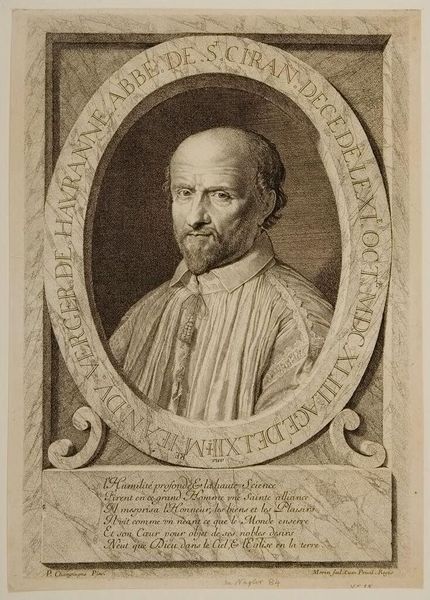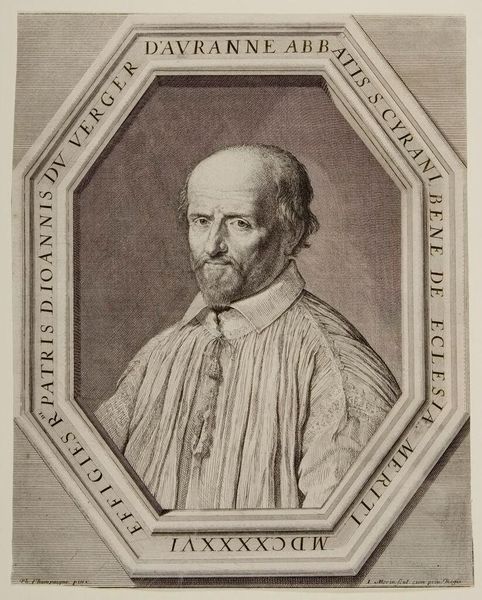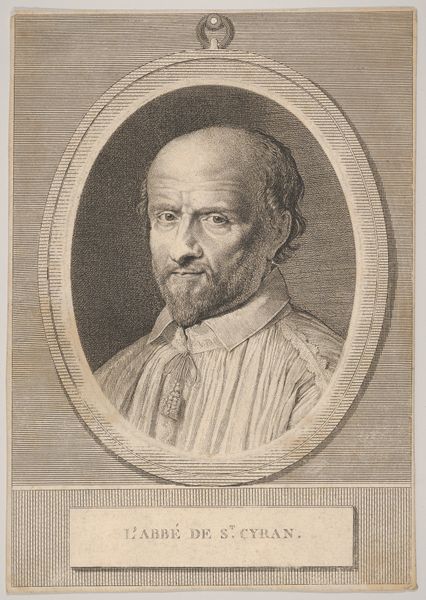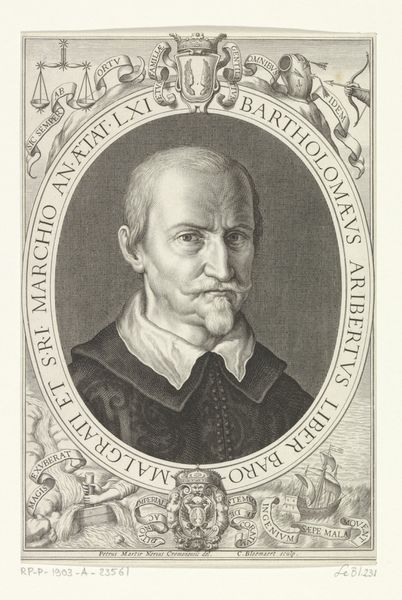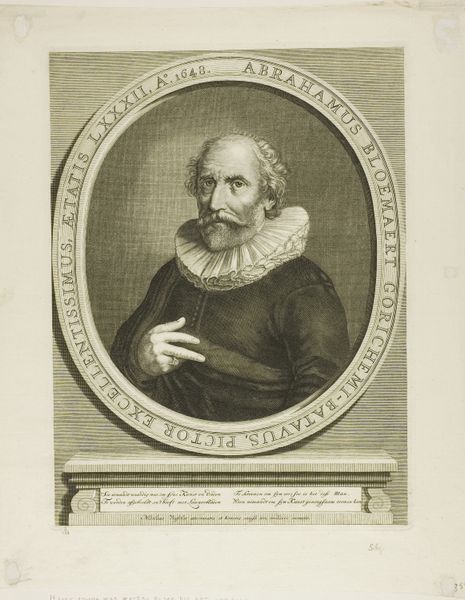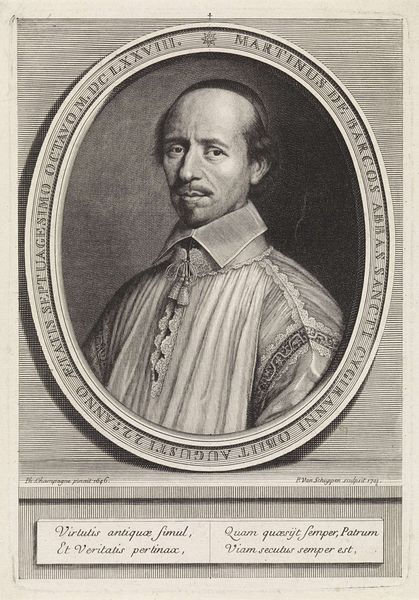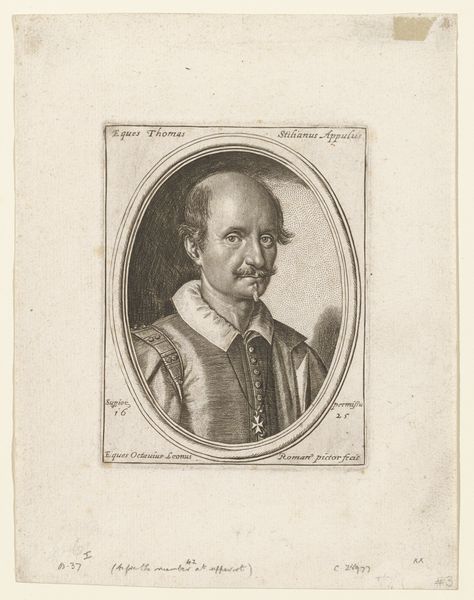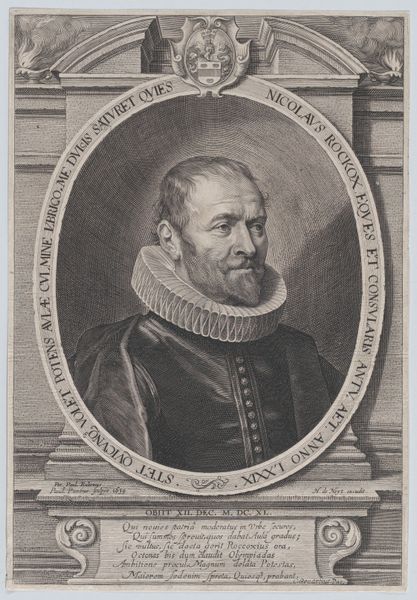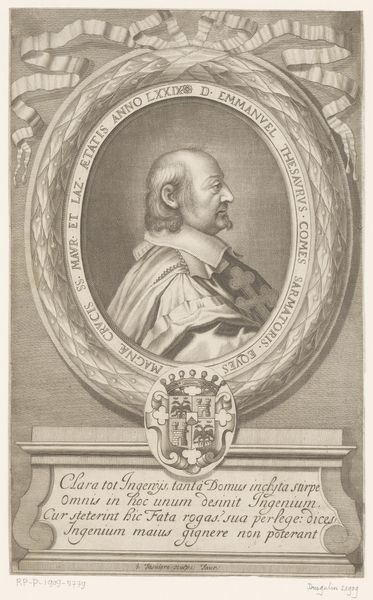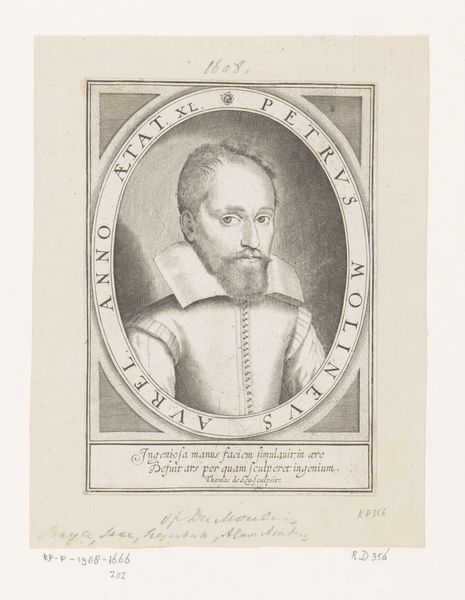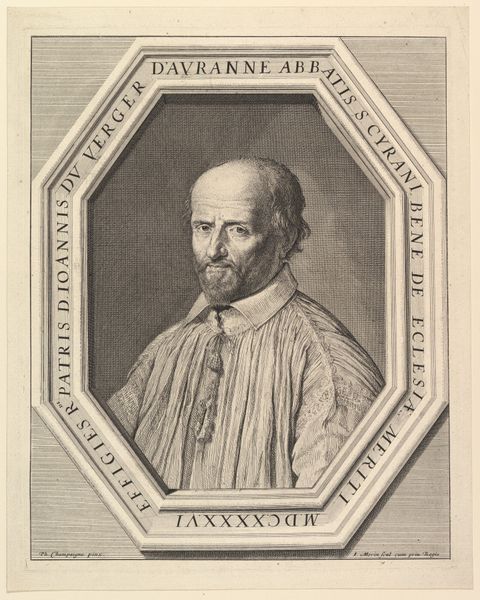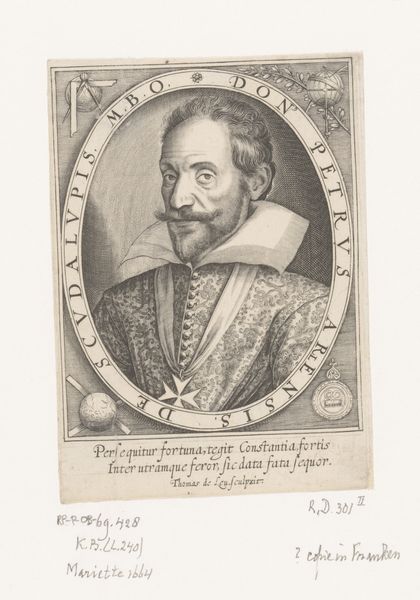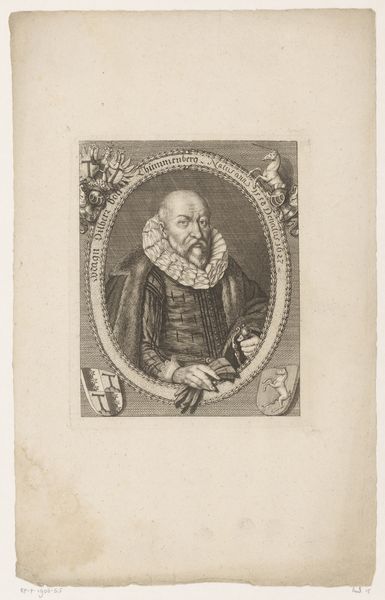
Jean Duvergier de Hauranne, abbe de Saint-Cyran 1605 - 1650
0:00
0:00
drawing, print, engraving
#
portrait
#
drawing
# print
#
old engraving style
#
engraving
Dimensions: image: 13 9/16 x 9 7/16 in. (34.4 x 23.9 cm)
Copyright: Public Domain
Curator: This is a print of Jean Duvergier de Hauranne, Abbé de Saint-Cyran, by Jean Morin. It dates to somewhere between 1605 and 1650. The print is currently housed in the Metropolitan Museum of Art. Editor: The engraving is so finely rendered—you can almost feel the texture of his garments. There's an interesting interplay of light and shadow. He looks somewhat severe, perhaps a bit world-weary? Curator: That seriousness speaks to the symbolism inherent in portraying Saint-Cyran. He was a central figure in the Jansenist movement, and his theology emphasized human depravity and the need for divine grace. So that weightiness resonates with the theological messages linked with the man and his role in history. Editor: I'm drawn to the craftsmanship. Look at the details etched into the oval frame, even the subtle rendering of what looks like a stone tablet below with a carefully inscribed inscription. The whole image is encased in laborious detail that adds to its formal gravity. Curator: Indeed, the very act of engraving allows for an intensity that mirrors the inflexibility of Jansenist doctrine. The process itself lends to that stern impression of moral unyielding. There is a powerful symbolic relationship there between medium and message, echoing Saint-Cyran's emphasis on asceticism and discipline. Editor: Thinking about the social context: printmaking enabled the wider dissemination of such images. How widely would you say this image, and by extension the ideas he stood for, circulate at the time? Curator: It’s a complex question. While engraving facilitated broader distribution than, say, a unique painting, its audience would still have been relatively limited to the literate and affluent classes, as prints were expensive at the time. Editor: I was first taken by his pensive mood, the fine etching details of his features, but now I find myself pondering the laborious nature of printmaking in relation to Jansenist austerity, fascinating. Curator: And for me, considering the print, what endures isn't only the technical skill involved, but also how it serves to propagate cultural memory of powerful individuals. It allows symbols to persist across the years.
Comments
No comments
Be the first to comment and join the conversation on the ultimate creative platform.
